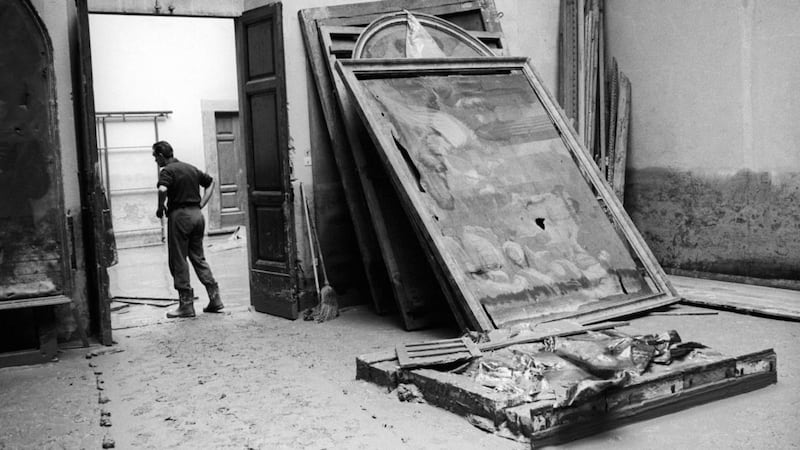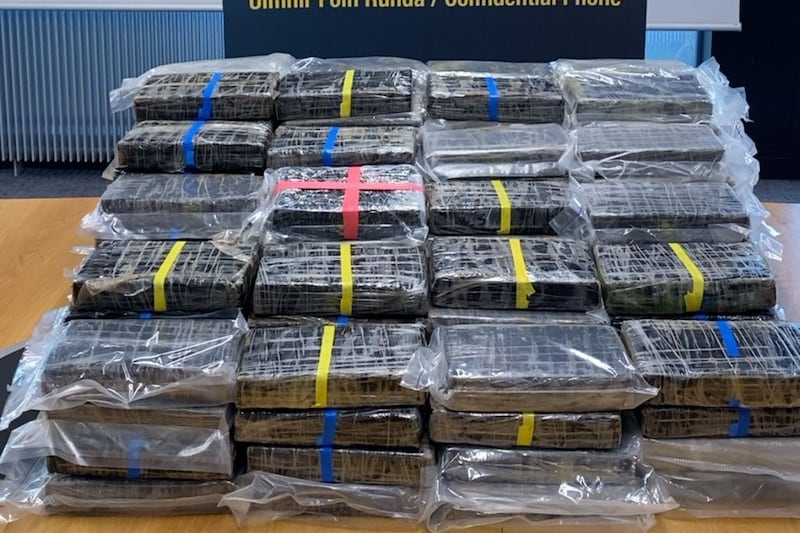A catastrophic flood in Florence in 1966 was the inspiration for Sarah Winman’s fourth novel, Still Life. A former actor for many years, Winman had her first novel, the bestselling When God Was a Rabbit, published in 2011. Between A Year of Marvellous Ways (2015) and Tin Man (2017), she took a short course in Renaissance art in the National Gallery of London; classes which turned out to be the catalyst for Still Life.
“As a result of the course, I went to Florence,” she says, on the phone from her home in London. “I was in a restaurant having lunch and I looked up and noticed a photograph. It was Florence under water. And I did a double take, because I wondered if it was Venice.”
It wasn’t Venice. It was images from the Florentine flood of half a century earlier, that had claimed 101 lives and destroyed countless thousands of artworks. The restaurant owner saw her interest, and came over to show her a book, with other images of the city from that time. Winman was staggered by what she initially learned from him about the flood, and then later, through her own research.
The river Arno flooding had happened at night and without warning. In the chaos that ensued, there was little chance to rescue some of the city’s vast treasury of artworks, many of them in churches, libraries and galleries closed for the night. Although cataloguing was imprecise, it is estimated some 14,000 pieces of portable artworks had either been destroyed or severely damaged.
Mud Angels
“What was left when the floodwaters receded was about a tonne of mud for every citizen who lived there,” Winman says. “Young people and art restorers came from all over the world to help clean the city, and they were called Mud Angels. And of course I am an incredible romantic, and I thought that was one of the most romantic things I had heard: that there was this sense of togetherness, that people came, and not only did they want to help save art, they were helping society too.”
Winman squirrelled away all this information in the back of her head, while she wrote her third novel, Tin Man. By then, the characters of Still Life, which opens in Tuscany in 1944, had started to form in her head. Two of the key protagonists are a young soldier, Ulysses Temper, and fellow Briton Evelyn Skinner, an art historian in her 60s. She, like the Mud Angels of two decades hence, is in Italy to try and rescue artwork from the aftermath of destruction, in this case, from war.
The novel opens with a lunch between two women – “two English spinsters” – in Tuscany. “These women were having this lovely lunch and wine, while the bombs were falling and the Allied aircraft were flying over, and actually there is a contentment to them as they talk about art. I wanted to look at that kind of contradiction between the brutality of war and the conversation of beauty; and these two states exist side by side. So then, I knew Ulysses and Evelyn had to meet, and of course the story had to be about the legacy of art and beauty and what it means.”

Prior to becoming a full-time novelist, Winman worked as an actor. What did she learn in her acting career that she was able to bring to her writing?
‘Theatrical book’
“Actors are storytellers,” she says. “You are not using your own words, but you understand the power of those words, because you are in front of an audience. So you learn how to put words together and you learn about the emotion that is attached to words. You learn a lot about dialogue. And I had a lot of bad dialogue in my time. But you can learn from that: you learn how to tell a story.
“I am very lucky in knowing how to inhabit a character. When you are acting, you are using your imagination to imagine how someone would feel in that moment. So all of that is useful as a writer. And in Still Life, I wanted to write a theatrical book, with lots of characters and a cinematic feel to it. I have always referred to myself as a storyteller, and not a novelist.”
Disruptions to society have been a recurring theme in Winman’s novels: world wars, the HIV epidemic. She finished writing Still Life during the global pandemic that is still far from over. How does she think writers might respond to the pandemic in fiction?
“I personally don’t feel like touching it. I am not sure people will touch it until it is finished because it’s only then we will have the answers to the questions. At the moment, it is playing out exactly as we thought it was going to play out. The rich countries have their vaccinations and the poor don’t. I think that theme will probably emerge: the societal injustices.”
As for her own politics, she says, “My politics are very clear in my books. But they are not shouty politics. I work from empathy. And I think it is an incredible movement; politics with empathy.
‘Empty city’
“Governments who are not that interested in the general populace fear people having compassion. They fear people having empathy. They fear people thinking what it might be like to be in someone else’s shoes, because that is a very powerful place to be and so what is much more beneficial for them is to have a populace that is divided.”
She returns to talking about the city of Florence again; the city that she could not visit this last year, and yet inhabited daily in her imagination while working on Still Life. “Somebody I know described walking around Florence during lockdown, and she said there was a sense of walking in an empty city where no memories are being created. The whole idea of time during this period is very strange. We go back and look at diaries and they are empty. It is as if things have been wiped this last year.”
Still Life by Sarah Winman is published by 4th Estate




















